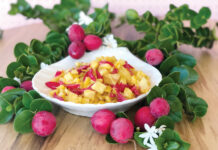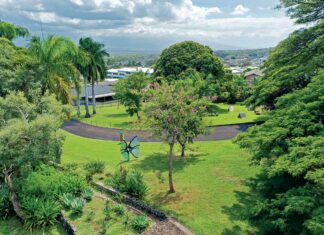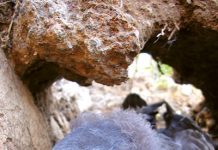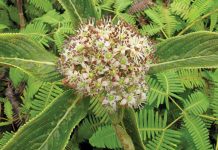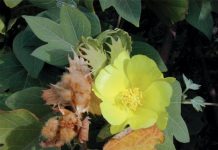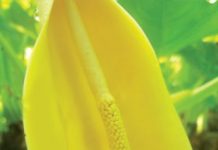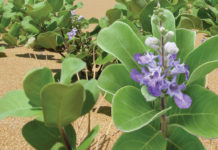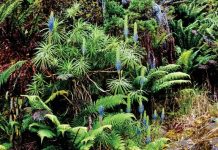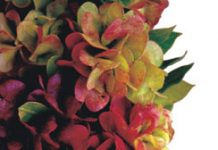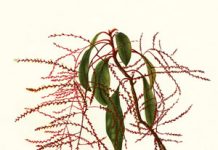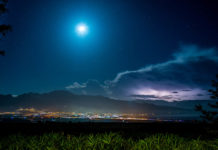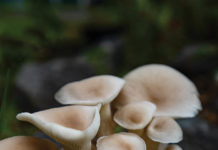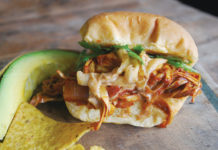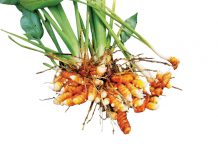Story by Shannon Wianecki | Photography by Forest & Kim Starr
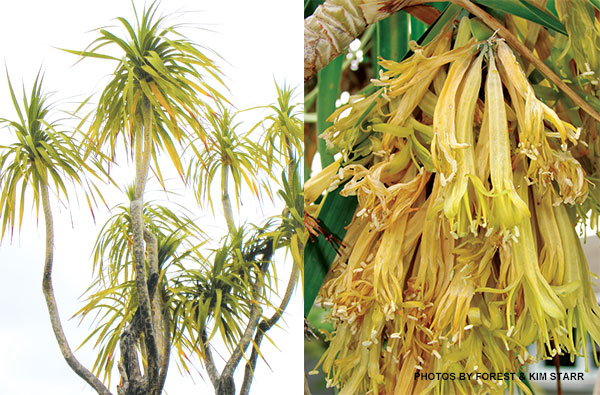
Hala pepe trees look like something dreamt up by Dr. Seuss. Among the most charismatic species in the Hawaiian dry-land forest, they sprout green pom-poms of leaves atop slender tan trunks. Beginning in late spring, they dangle profusions of yellow pendant flowers, followed by berries that ripen to a deep red.
Hula dancers preparing for the upcoming Merrie Monarch festival on Hawai‘i Island are likely seeking out hala pepe branches to adorn their kuahu, or hula altar. The tree is sacred to two Hawaiian deities: Laka, the goddess of hula, and Kapo‘ulakina‘u, the goddess of sorcery.
Threatened by feral goats, cattle, alien grasses, fire, and development, hala pepe is rare in the wild; serious hula practitioners cultivate the slow-growing tree in their gardens. It belongs to the agave family, and can tower up to forty feet.
Six different species of hala pepe exist—each one endemic to its own Hawaiian island. Maui’s species is named Pleomele auwahiensis after Auwahi, the spectacular dryland forest on leeward Haleakala. Thanks to conservation efforts, bushy old trees can still be found on the mountainside. For a good peek at one, join the Auwahi Restoration Group (Auwahi.org) on one of their monthly volunteer trips.

